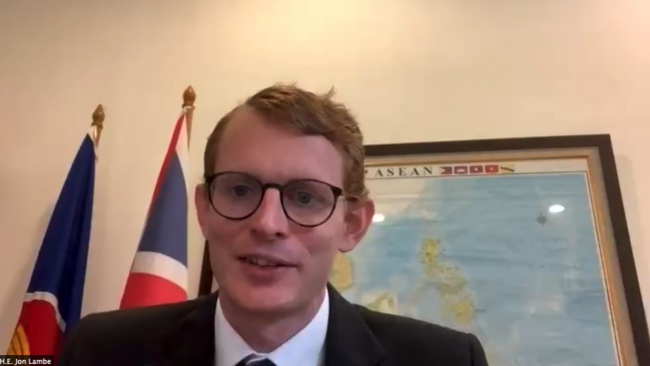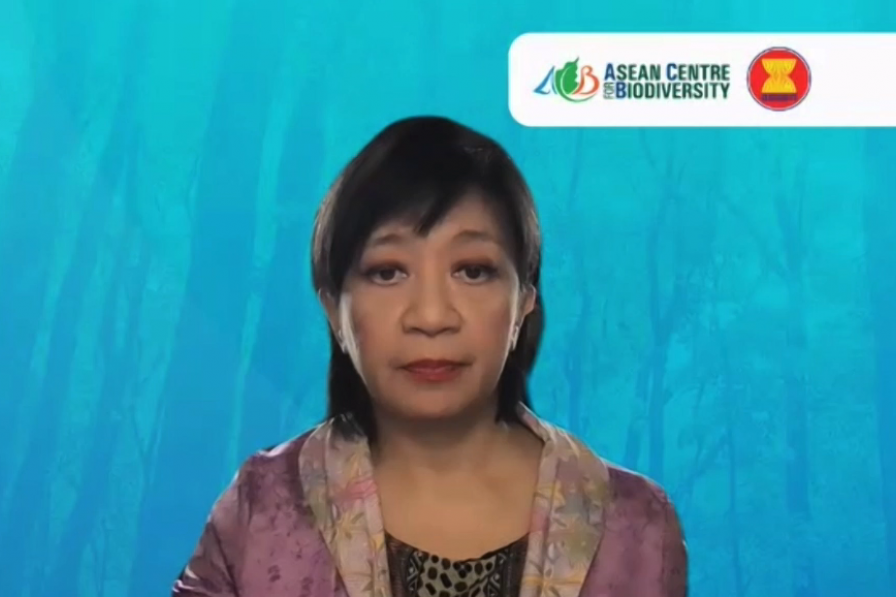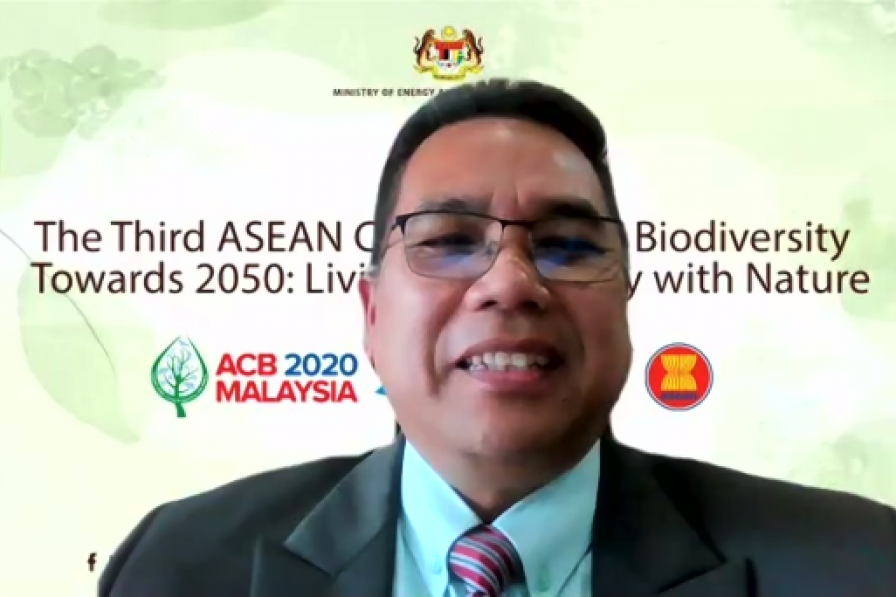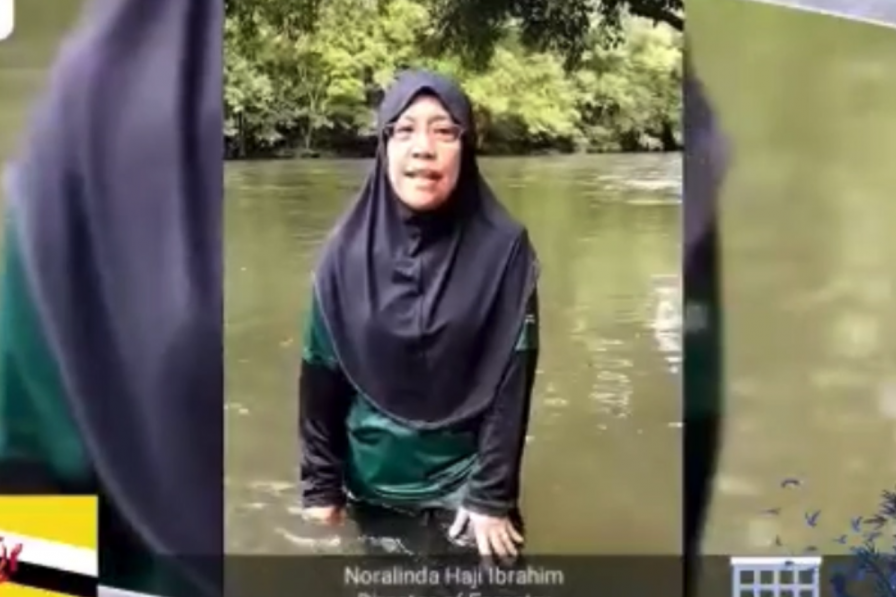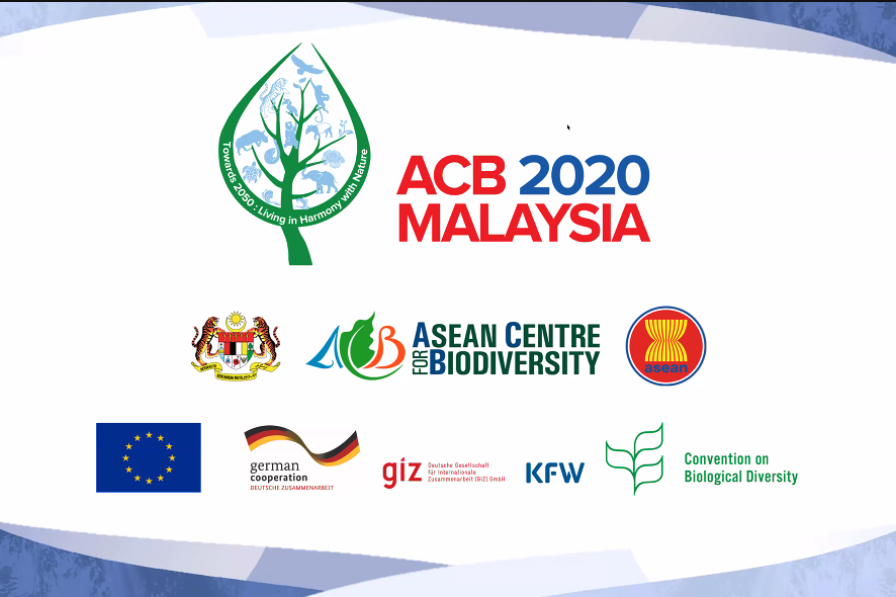The final session of the Third ASEAN Conference on Biodiversity took place online, and was co-organized by the Government of Malaysia and its Ministry of Energy and Natural Resources (KeTSA) with the ASEAN Center for Biodiversity. The overall theme of the conference was "Towards 2050: Living in Harmony with Nature."
ASEAN Member States presented their recommendations for the Post-2020 Global Biodiversity Framework, which is expected to be adopted at the 15th meeting of the Conference of the Parties to the Convention on Biological Diversity (CBD COP 15) in Kunming, China, later this year.
The half-day session opened with addresses from Theresa Mundita Lim, Executive Director, ASEAN Center for Biodiversity, and Malaysia’s Minister of Energy and Natural Resources, Shamsul Anuar Nasarah.
Basile van Havre, Co-Chair of the Open-Ended Working Group (OEWG) on the Post-2020 Global Biodiversity Framework, highlighted the importance of Asian voices in developing the framework.
ASEAN Deputy Secretary-General Kung Phoak presented initiatives and opportunities for the ASEAN region to build back better from the pandemic, while conserving biodiversity.
Hesiquio Benitez, Chair of the CBD’s Subsidiary Body on Scientific, Technical and Technological Advice (SBSTTA), highlighted progress on negotiations toward the Post-2020 Global Biodiversity Framework. He noted that further discussions will be needed to conclude text regarding marine and coastal biodiversity, invasive alien species, and biodiversity and health.
Civil society leaders called for protecting the human rights of indigenous peoples and local communities when they seek to protect their territories from destruction, and for education, gender equality and fair distribution of benefits to be part of action on biodiversity. A private sector representative highlighted the sector's role not only in biodiversity finance, but also in its contributions to policy making.
Mazlan Othman, Director, International Science Council Regional Office for Asia and the Pacific, introduced how Foresight Planning can be applied to biodiversity. She drew attention to the USD 33 trillion value of global biodiversity and ecosystems, which, she stressed, are providing the world’s food systems and medicines.
Jon Lambe, UK Ambassador to ASEAN, urged all concerned to support the “30 x 30” target of protecting 30% of the Earth’s land and water by 2030. He emphasized that protecting biodiversity is economically beneficial, and that the 30 x 30 target is a global one, which does not signify identical obligations for every country but rather for the Earth as a whole.
Marcia Tambutti, UN Economic Commission for Latin America and the Caribbean (ECLAC), demonstrated how biodiversity mainstreaming serves as a cornerstone for sustainable development. She emphasized the need for further enhancing and scaling up biodiversity mainstreaming to promote systemic changes.
In a recorded message, ASEAN Secretary-General Lim Jock Hoi, Brunei Darussalam, called for a whole-of-society approach and multi-stakeholder collaboration to enable the wiser use of natural resources.
At the close of the meeting, Abdul Wahid Abu Salim, Deputy Secretary General, KeTSA, Malaysia, summarized recommendations from ASEAN Member States for the Post-2020 Global Biodiversity Framework. He emphasized that the development of the framework must be participatory, especially when coordinating efforts to meet the new targets. He noted that full implementation will require the provision of resources to developing countries, including financial support and technology transfer. He highlighted countries’ efforts to mainstream biodiversity in agriculture, fisheries and other sectors, while also undertaking crosscutting action. He concluded that a united response, enhanced cooperation, and mobilization of resources in the ASEAN region will make it possible to achieve the 2030 targets and 2050 vision under the CBD.
The meeting closed at 12.35 pm, following the screening of a campaign video, “We Are ASEAN Biodiversity.”

